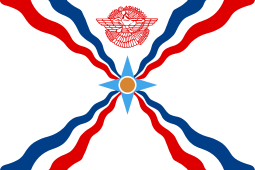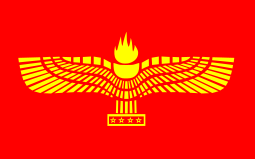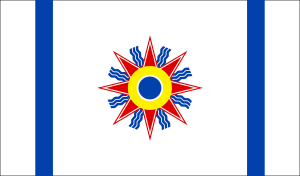Simele massacre
The Simele massacre (Syriac: ܦܪܡܬܐ ܕܣܡܠܐ pramta d-Simele, Arabic: مذبحة سميل maḏbaḥat Summayl) was a massacre committed by the armed forces of the Kingdom of Iraq led by Bakr Sidqi during a campaign systematically targeting the Assyrians of northern Iraq in August 1933. The term is used to describe not only the massacre in Simele, but also the killing spree that took place among 63 Assyrian villages in the Dohuk and Mosul districts that led to the deaths of between 600[1] and 3,000[2] Assyrians.
| Simele massacre | |
|---|---|
 Area where villages were looted
Heavily targeted Assyrian villages | |
| Location | Northern Kingdom of Iraq, notably at Simele |
| Coordinates | 36°51′30″N 42°51′0″E |
| Date | 7 August 1933 – 11 August 1933 |
Attack type | Summary executions, mass murder, looting |
| Deaths | 600–3,000 |
| Victim | Assyrians |
Background
Assyrians of the mountains
The majority of the Assyrians affected by the massacres were adherents of the Church of the East (often dubbed Nestorian), who originally inhabited the mountainous Hakkari and Barwari regions covering parts of the modern provinces of Hakkâri, Şırnak and Van in Turkey and Dohuk Governorate in Iraq, with a population ranging between 75,000 and 150,000.[3][4] Most of these Assyrians were massacred during the 1915 Assyrian Genocide, at the hands of the Ottoman Turks. The rest endured two winter marches to Urmia in 1915 and to Hamadan in 1918. Many of them were relocated by the British to refugee camps in Baquba and later to Habbaniyah, and in 1921 some were enlisted in the pro-British Assyrian Levies which helped quell Kurdish revolts in the British Mandate of Mesopotamia.[5] Most Hakkari Assyrians were resettled after 1925 in a cluster of villages in northern Iraq.[6] Some of the villages where the Assyrians settled were leased directly by the government, while others belonged to Kurdish landlords who had the right to evict them at any time.[7]
The Assyrians did not have an amicable relationship with their neighbours. Their historical feud with the Kurds, which culminated in 1915, was centuries old. Bitterness between the Assyrians and the Arabs was reported by British historians as far back as 1920.[8] This was made worse by the British officers of the Levies who encouraged their supremacism.[8] This, coupled with the fact that the British and Assyrian levies succeeded in suppressing Kurdish revolts when the Iraqi Army failed, created an inferiority complex among some Iraqi corps towards the British and the Assyrians.[9]
The end of the British Mandate of Iraq caused considerable unease among the Assyrians, who felt betrayed by the British. For them, any treaty with the Iraqis had to take into consideration their desire for an autonomous position similar to the Ottoman Millet system.[10][11] The Iraqis, on the other hand felt that the Assyrians' demands were, alongside the Kurdish disturbances in the north, a conspiracy by the British to divide Iraq by agitating its minorities.[12]
Iraqi independence and crisis
With Iraqi independence, the new Assyrian spiritual-temporal leader, Shimun XXI Eshai (Catholicos Patriarch of the Assyrian Church of the East), demanded an autonomous Assyrian homeland within Iraq, seeking support from the United Kingdom and pressing his case before the League of Nations in 1932. His followers planned to resign from the Assyrian Levies (a military force under British command) and to re-group as a militia and concentrate in the north, creating a de facto Assyrian enclave.[13]
In spring 1933, Malik Yaqu, a former levies' officer, was engaged in a propaganda campaign on behalf of Assyrian Patriarch Shimun XXI Eshai (or Mar Shimun), trying to persuade Assyrians not to apply for Iraqi nationality or accept the settlement offered to them by the central government. Yaqo was accompanied by 200 armed men, which was seen as an act of defiance by the Iraqi authorities.[14] His activities caused distress among the Kurds and the Iraqi government started sending troops to the Dohuk region in order to intimidate Yaqu and dissuade Assyrians from joining his cause.[15]
In June 1933, Shimun XXI Eshai was invited to Baghdad for negotiations with Hikmat Sulayman's government but was detained there after refusing to relinquish temporal authority.[16] He would eventually be exiled to Cyprus.[17]
Massacres
Clashes at Dirabun
On 21 July 1933, more than 600 Assyrians, led by Malik Yaqu, crossed the border into Syria in hope of receiving asylum from the French Mandate of Syria. They were, however, disarmed and refused asylum, and were subsequently given light arms and sent back to Iraq on 4 August. They then decided to surrender themselves to the Iraqi Army.[18] While crossing the Tigris in the Assyrian village of Dirabun, a clash erupted between the Assyrians and an Iraqi Army brigade. Despite the advantage of heavy artillery, the Iraqis were driven back to their military base in Dirabun. The Assyrians, convinced that the army had targeted them deliberately, attacked an army barracks with little success.[19] They were driven back to Syria upon the arrival of Iraqi aeroplanes. The Iraqi Army lost 33 soldiers during the fighting while the Assyrian irregulars took fewer casualties.[20] Historians do not agree on who started the clashes at the border. The British Administrative Inspector for Mosul, Lieutenant Colonel R. R. Stafford, wrote that the Assyrians had no intention of clashing with the Iraqis, while the Iraqi historian Khaldun Husry (son of the prominent Arab nationalist Sati' al-Husri) claims that it was Yaqu's men who provoked the army at Dirabun.[1][21] Husry supported the propaganda rumours, which circulated in the Iraqi nationalist newspapers, of the Assyrians mutilating the bodies of the killed Iraqi soldiers.[22] This further enraged the Iraqi public against the Assyrians.[19]
Beginning of the massacres
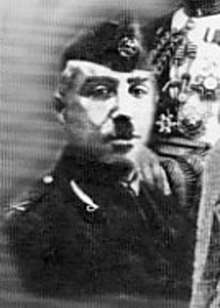
Even though all military activities ceased by 6 August 1933, exaggerated stories of atrocities committed by the Assyrians at Dirabun and the persistent anti-Christian propaganda and rumours insisted that the Christians were planning to blow bridges up and to poison drinking water in major Iraqi cities.[23] According to some historians, the agitation against the Assyrians was also encouraged by Rashid Ali al-Gaylani's Arab nationalist government, which saw it as a distraction to the continuous Shiite revolt in the southern part of the country.[24][25][26]
The Iraqi Army, led by Bakr Sidqi, an experienced brigadier general, an Iraqi nationalist and general of Kurdish origin, although not a Kurdish nationalist,[27][28] moved north in order to crush the Assyrian revolt. The Iraqi forces started executing every Assyrian male found in the mountainous Bekher region between Zakho and Duhok starting from 8 August 1933. Assyrian civilians were transported in military trucks from Zakho and Dohuk to uninhabited places, in batches of eight or ten, where they were shot with machine guns and run over by heavy armoured cars to make sure no one survived.[29]
Looting of villages
While these killings were taking place, nearby Kurdish, Arab and Yazidi tribes were encouraged to loot Assyrian villages. Kurdish tribes of Gulli, Sindi and Selivani were encouraged by the mayor of Zakho to loot villages to the northeast of Simele,[30] while Yazidis and Kurds also raided Assyrian villages in Shekhan and Amadiya.[31] Most women and children from those villages took refuge in Simele and Dohuk.[32]
On 9 August, the Arab tribes of Shammar and Jubur started crossing the east bank of the Tigris and raiding Assyrian villages on the plains to the south of Dohuk.[32] They were mostly driven by the loss of a large part of their own livestock to drought in the previous years.[33]
More than 60 Assyrian villages were looted. Even though women and children were mostly left to take refuge in neighbouring villages, men were sometimes rounded up and handed over to the army, by whom they were duly shot.[31] Some villages were completely burned down and most of them were later inhabited by Kurds.[34]
Massacre of Simele
18 August 1933
The town of Simele became the last refuge for Assyrians fleeing from the looted villages. The mayor of Zakho arrived with a military force on 8 and 9 August to disarm the city. During that time thousands of refugees flocked around the police post in the town, where they were told by officials that they would be safe under the Iraqi flag.[32] 10 August saw the arrival of Kurdish and Arab looters who, undeterred by the local police, took away the freshly cut wheat and barley. During the night of 10–11 August, the Arab inhabitants of Simele joined the looting. The Assyrian villagers could only watch as their Arab neighbours drove their flocks before them.[35]
On 11 August the villagers were ordered to leave the police post and return to their homes, which they began to do with some reluctance. As they were heading back Iraqi soldiers in armoured cars arrived, and the Iraqi flag flying over the police post was pulled down.[35] Without warning or obvious provocation, the troops began to fire indiscriminately against the defenseless Assyrians. Ismael Abbawi Tohalla, the commanding officer, then ordered his troops not to target women. Stafford, describes the ensuing massacre as follows:[36]
A cold blooded and methodical massacre of all the men in the village then followed, a massacre which for the black treachery in which it was conceived and the callousness with which it was carried out, was as foul a crime as any in the blood stained annals of the Middle East. The Assyrians had no fight left in them, partly because of the state of mind to which the events of the past week had reduced them, largely because they were disarmed. Had they been armed it seems certain that Ismail Abawi Tohalla and his bravos would have hesitated to take them on in fair fight. Having disarmed them, they proceeded with the massacre according to plan. This took some time. Not that there was any hurry, for the troops had the whole day ahead of them. Their opponents were helpless and there was no chance of any interference from any quarter whatsoever. Machine gunners set up their guns outside the windows of the houses in which the Assyrians had taken refuge, and having trained them on the terror stricken wretches in the crowded rooms, fired among them until not a man was left standing in the shambles. In some other instance the blood lust of the troops took a slightly more active form, and men were dragged out and shot or bludgeoned to death and their bodies thrown on a pile of dead.
In his depiction of the massacre, Mar Shimun, mentions that:[37]
Girls were raped and made to march naked before Iraqi commanders. Children were run over by military cars. Pregnant women were bayonetted. Children were flung in the air and pierced on to the points of bayonets. Holy books were used for the burning of the massacred.
The official Iraqi account that the Assyrian casualties were sustained during a short battle with Kurdish and Arab tribes has been discredited by all historians.[38] Khaldun Husry claims that the mass killing was not premeditated and that the responsibility lies on the shoulders of Ismael Abbawi, a junior officer in the army.[39]
On 13 August, Bakr Sidqi moved his troops to Alqosh, where he planned to inflict a further massacre on the Assyrians who found refuge there.[40][41]
Targeted villages

| List of targeted villages[42] | |||||||||||||
| Ala Keena | Bameri | Betershy | Dairke | Gond Naze | Kaserezden | Korekavana | Majel Makhte | Sirchuri | |||||
| Aloka | Barcawra | Betafrey | Dair Kishnik | Harkonda | Kerry | Kowashey | Rabibyia | Shekhidra | |||||
| Badalliya | Baroshkey | Bidari | Derjendy | Idleb | Kitba | Lazga | Rekawa | Spendarook | |||||
| Baderden | Basorik | Biswaya | Fishkhabour | Kaberto | Khalata | Mansouriya | Sar Shorey | Tal Zet | |||||
| Bagerey | Bastikey | Carbeli | Garvaly | Karpel | Kharab Koli | Mawani | Sezary | Tel Khish | |||||
| Bakhitmey | Benaringee | Chem Jehaney | Gereban | Karshen | Kharsheniya | Qasr Yazdin | Sidzari | Zeniyat | |||||
Today, most of these villages are inhabited by Kurds. The main campaign lasted until 16 August 1933, but violent raids on Assyrians were being reported up to the end of the month.[43] The campaign resulted in one third of the Assyrian population of Iraq fleeing to Syria.[44]
Aftermath
On 18 August 1933, Iraqi troops entered Mosul where they were given an enthusiastic reception by its Muslim inhabitants. Triumphant arches were erected and decorated with melons pierced with daggers, symbolising the heads of murdered Assyrians.[45] The crown prince Ghazi himself came to the city to award 'victorious' colours to those military and tribal leaders who participated in the massacres and the looting.[46] Anti-Christian feeling was at its height in Mosul, and the Christians of the city were largely confined to their homes during the whole month in fear of further action by the frenzied mob.[46]
The Iraqi Army later paraded in the streets of Baghdad in celebration of its victories.[47] Bakr Sidqi was promoted; he later led Iraq's first military coup and became prime minister.[48] Popular support for a compulsory conscription bill rose after the massacres.
Immediately after the massacre and the repression of the alleged Assyrian uprising, the Iraqi government demanded a conscription bill. Non-Assyrian Iraqi tribesmen offered to serve in the Iraqi army in order to counter the Assyrians. In late August, the government of Mosul demanded that the central government 'ruthlessly' stamp out the rebellion, eliminate all foreign influence in Iraqi affairs, and take immediate steps to enact a law for compulsory military service. The next week, 49 Kurdish tribal chieftains joined in a pro-conscription telegram to the government, expressing thanks for punishing the 'Assyrian insurgents',[49] stating that a "nation can be proud of itself only through its power, and since evidence of this power is the army," they requested compulsory military service.[49] Rashid Ali al-Gaylani presented the bill to the parliament, his government fell, however, before it was legislated and Jamil al-Midfai's government enacted conscription in February 1934.[50][51]
From the nationalists' point of view, the Assyrian Levies were British proxies to be used by their 'masters' to destroy the new Iraqi state whose independence the British had consistently opposed. The British allowed their Assyrian auxiliary troops to retain their arms and granted them special duty and privileges: guarding military air installations and receiving higher pay than the Iraqi Arab recruits.[52] Under British protection, the Assyrian Levies did not become Iraqi citizens after until 1924.[53] The nationalists believed the British were hoping for the Assyrians to destroy Iraq's internal cohesion by becoming independent and by inciting others such as the Kurds to follow their example.[54]
The massacres and looting had a deep psychological impact on the Assyrians. Stafford reported their low morale upon arrival in Alqosh:[55]
When I visited Alqosh myself on August 21st I found the Assyrians, like the Assyrians elsewhere, utterly panic-stricken. Not only were they disturbed, but their spirit was completely broken. It was difficult to recognize in their cowed demeanour the proud mountaineers whom everyone had known so well and admired so much for the past dozen years.
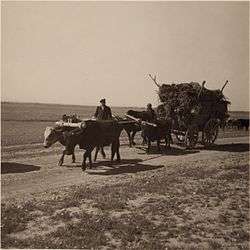
Because of the massacre, around 6,200 Assyrians left Nineveh Plains immediately for the neighbouring French Mandate of Syria, and were later joined by 15,000 refugees the following years. They concentrated in the Jazira region and built a number of villages on the banks of the Khabur River.[56]
King Faysal, who recently returned to Iraq from a medical vacation, was very stressed during the crisis. His health deteriorated even more during the hot summer days in Baghdad. The British chargé d'affaires met him in his pajamas squatting in his bed on 15 August, where he denied that a massacre was committed in Simele. Faysal left Iraq again on 2 September 1933, seeking a cooler climate in London, where he died five days later.[57]
Mar Shimun who had been detained since June 1933, was forced into exile along with his extended family, despite initial British reluctance. He was flown on an RAF plane to Cyprus on 18 August 1933, and to the United States in 1949, later forcing the head of the Assyrian Church of the East to relocate to Chicago, where it remained until 2015. In 1948, Shimun met with the representatives of Iraq, Syria and Iran in Washington, subsequently calling upon his followers to "live as loyal citizens wherever they resided in the Middle East" and relinquishing his role as a temporal leader and the nationalistic role of the church. This left a power vacuum in Assyrian politics that was filled by the Assyrian Universal Alliance in 1968.[58]
The seat of the Assyrian Church of the East remained in the United States even during the times of Patriarch Mar Dinkha IV. Only with the newly consecrated Patriarch Mar Gewargis III in 2015 did the patriarchal seat of the Assyrian Church of the East return to Iraq relocating in north Iraq.[17]
Responsibility for the massacres
Official British sources estimate the total number of all Assyrians killed during August 1933 at around 600, while Assyrian sources put the figure at 3,000.[1] Historians disagree as to who was responsible for ordering the mass killings. Stafford blames Arab nationalists, most prominently Rashid Ali al-Gaylani and Bakr Sidqi.[15][59] According to him, Iraqi Army officers despised the Assyrians, and Sidqi in particular was vocal of his hate for them. This view was also shared by British officials who recommended to Faysal not to send him to the north during the crisis.[15] Husry blamed the Assyrians for starting the crisis and absolved Sidqi from ordering the mass killing in Simele. He hinted that Faysal was the authority who might have issued orders to exterminate Assyrian males.[59] Kanan Makiya, a leftist Iraqi historian, presents the actions taken by the military as a manifestation of the nationalist anti-imperialist paranoia which was to culminate with the Ba'athists ascending to power in the 1960s.[60] Fadhil al-Barrak, an Iraqi Ba'athist historian, credits Sidqi as the author of the whole campaign and the ensuing massacres. For him, the events were part of a history of Iraq prior to the true nationalist revolution.[60]
British role
Iraqi–British relations entered a short cooling-down period during and after the crisis. The Iraqis were previously encouraged by the British to detain Patriarch Shimun in order to defuse tensions.[61] The British were also wary of Iraqi military leaders and recommended Sidqi, a senior ethnic Kurdish general who was stationed in Mosul, be transferred to another region due to his open animosity towards the Assyrians.[61] Later, they had to intervene to dissuade Faysal from personally leading a tribal force to punish the Assyrians.[59]
The general Iraqi public opinion, promoted by newspapers, that the Assyrians were proxies used by the British to undermine the newly established kingdom, was also shared by some leading officials, including the prime minister. British and European protests following the massacre only confirmed to them that the "Assyrian rebellion" was the work of European imperialism.[62]
Both King George V of England and Cosmo Gordon Lang the Bishop of Canterbury took a personal interest in the Assyrian affair. British representatives at home demanded from Faysal that Sidqi and other culprits be tried and punished.[62] The massacres were seen in Europe as a jihad against a small Christian minority.[63]
In the long term, however, the British backed Iraq and rejected an international inquiry into the killings, fearing that this may provoke further massacres against Christians.[62] They also did not insist on punishing the offenders, who were now seen as heroes by Iraqis.[62] The official British stance was to defend the Iraqi government for its perseverance and patience in dealing with the crisis and to attribute the massacres to rogue army units. A report on the battle of Dirabun blames the Assyrians, defends the actions of the Iraqi Army, and commends Sidqi as a good officer.[62]
The change in British attitude towards the Assyrians gave rise to the notion of the "British betrayal" among some Assyrian circles.[64] An idea which first gained popularity after 1918, when the Assyrians who were concentrated in Urmia did not receive the British relief which led to their massacre by the Turks and Kurds and their deportation to Hamadan.[65]
Cultural impact and legacy
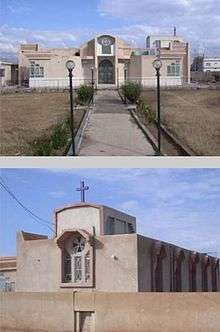

7 August officially became known as Martyrs Day or National Day of Mourning by the Assyrian community in memory for the Simele massacre, as it was declared so by the Assyrian Universal Alliance in 1970.[66]
In 2004, the Syrian government banned an Assyrian political organization from commemorating the event and threatened arrests if any were to break the ban.[67]
Assyrian music artist Shlimon Bet Shmuel has written a song about the event.[68] A number of poems and stories have been written about the incident, including one by the American-Armenian writer William Saroyan, titled "Seventy Thousand Assyrians", written in 1934;
...We're washed up as a race, we're through, it's all over, why should I learn to read the (Assyrian) language? We have no writers, we have no news—well, there is a little news: once in a while the English encourage the Arabs to massacre us, that is all. It's an old story, we know all about it.[69][70]
The Simele massacre was instrumental in Raphael Lemkin's creation of the concept of genocide.[71] In 1933, Lemkin made a presentation to the Legal Council of the League of Nations conference on international criminal law in Madrid, for which he prepared an essay on the "Crime of Barbarity" as a crime against international law, the concept of the "crime of barbarity" evolved into the idea of genocide.[72]
The massacres also had a deep impact on the newly established Kingdom of Iraq. Kanan Makiya argues that the killing of Assyrians transcended tribal, religious, ideological and ethnic barriers as Sunni Arabs, Shia Arabs, Sunni Kurds, Sunni Turkmen, Shia Turkmen, and Yazidis; Monarchists, Islamists, nationalists, royalists, conservatives, Leftists, federalists, and tribalists, were all united in their anti-Assyrian and anti-Christian sentiments. According to him, the pogrom was "the first genuine expression of national independence in a former Arab province of the Ottoman Empire" and that the killing of Assyrian Christians was seen as a national duty.[9]
The British were standing firmly behind the leaders of their former colony during the crisis, despite the popular animosity towards them. Brigadier General E. H. Headlam of the British military mission in Baghdad was quoted saying "the government and people have good reasons to be thankful to Colonel Bakr Sidqi".[73]
See also
- List of massacres in Iraq
- Assyrian struggle for independence
- Iraqi Shia revolts 1935–1936
- List of modern conflicts in the Middle East
Notes
- Zubaida 2000, p. 370
- "Displaced persons in Iraqi Kurdistan and Iraqi refugees in Iran" (PDF). fidh.org. International Federation for Human Rights. January 2003. p. 17. Retrieved 23 September 2011.
- Joseph 2000, p. 60
- Gaunt & Beṯ-Şawoce 2006, pp. 125–126
- Stafford 2006, pp. 62–63
- Stafford 2006, pp. 42–43
- Stafford 2006, pp. 53–54
- Husry 1974, p. 165
- Makiya 1998, p. 170
- Husry 1974, p. 162
- Husry 1974, p. 168
- Husry 1974, p. 164
- Stafford 2006, p. 110
- Husry 1974, p. 170
- Stafford 2006, pp. 128–129
- Stafford 2006, p. 133
- "Biography of His Holiness, The Assyrian Martyr , The Late Mar Eshai Shimun XXIII". Committee of the 50th Anniversary of the Patriarchate of Mar Eshai Shimun XXIII. peshitta.org. Retrieved 23 September 2011.
- Stafford 2006, p. 136
- Stafford 2006, p. 145
- Stafford 2006, p. 146
- Husry 1974, p. 174
- Husry 1974, pp. 175–176
- Stafford 2006, p. 183
- Makiya 1998, p. 169
- Joseph 2000, p. 198
- Stafford 2006, p. 149
- David McDowall, A Modern History of the Kurds, I.B.Tauris, 2000, ISBN 978-1-85043-416-0, p. 289.
- Denise Natali, The Kurds and The State: Evolving National Identity in Iraq, Turkey, and Iran, Syracuse University Press, 2005, ISBN 978-0-8156-3084-5, p. 35.
- Stafford 2006, pp. 154–155
- Stafford 2006, p. 167
- Stafford 2006, p. 168
- Stafford 2006, p. 158
- Stafford 2006, p. 169
- Makiya 1998, p. 168
- Stafford 2006, p. 159
- Stafford 2006, pp. 160–161
- Shimun 2010, p. a62
- Husry 1974, p. 345
- Husry 1974, p. 347
- Stafford 2006, p. a62
- Stafford 2006, p. 162
- Eshoo, Majed. "The Fate Of Assyrian Villages Annexed To Today's Dohuk Governorate In Iraq And The Conditions In These Villages Following The Establishment Of The Iraqi State In 1921". Assyrian International News Agency. Retrieved 23 September 2011.
- Stafford, R. S. (1934). "Iraq and the Problem of the Assyrians". International Affairs. 13 (2): 159–185. doi:10.2307/2603135. JSTOR 2603135.CS1 maint: ref=harv (link)
- Official journal , Volume 18. League of Nations. 1937. p. 927.
- Stafford 2006, p. 184
- Stafford 2006, p. 188
- Anderson & Stansfield 2004, pp. 23–24
- Anderson & Stansfield 2004, p. 25
- Simon 2004, p. 113
- Eisenstadt, M; Mathewson, E (2003). U.S. policy in post-Saddam Iraq: lessons from the British experience. Washington Institute for Near East Policy. p. 84. ISBN 978-0-944029-84-8.
- Nisan 2002, p. 106
- Kelidar 1979, p. 106
- Omissi 1990, p. 65
- Sluglett 2007, pp. 154–156
- Stafford 2006, p. 171
- League of Nations (1935). Official journal: Special supplement, Issues 138–144. the University of Michigan. p. 70.
- Husry 1974, pp. 351
- DeKelaita, Robert (22 November 2009). "The Origins and Developments of Assyrian Nationalism" (PDF). Committee on International Relations Of the University of Chicago. Assyrian International News Agency. Retrieved 23 September 2011.
- Zubaida 2000, pp. 375–376
- Zubaida 2000, pp. 377–378
- Husry 1974, pp. 173
- Zubaida 2000, p. 371
- Husry 1974, pp. 353
- Malek, Y. "The British Betrayal of the Assyrians". AINA.org. Retrieved 14 November 2011.
- Ishaya, A. "Assyrians in the History of Urmia, Iran". Nineveh. Retrieved 14 November 2011.
- Shapira, Aprim. "Why is the 7th of August an Assyrian Martyrs' Day?". Beth Suryoyo Assyrian. Retrieved 23 September 2011.
- Abraham, Salim (8 August 2004). "Syrian Authorities Ban Assyrian Party from Commemorating Martyrs Day". Associated Press. Retrieved 23 September 2011.
- "Shlimon Bet-Shmuel's Discography". ShlimonBetShmuel.com. Retrieved 23 September 2011.
- William Saroyan, "Seventy Thousand Assyrians", in William Saroyan, The Daring Young Man on the Flying Trapeze and Other Stories. New York: New Directions, 1934
- Seventy Thousand Assyrians, William SAROYAN, WikiQuotes.
- Sargon Donabed (1 February 2015). Reforging a Forgotten History: Iraq and the Assyrians in the 20th Century. Edinburgh University Press. pp. 110–. ISBN 978-0-7486-8605-6.
- "Raphael Lemkin". EuropeWorld. 22 June 2001. Archived from the original on 16 April 2010. Retrieved 23 September 2011.
- Makiya 1998, p. 174
References
- Interview with witness on YouTube
- Stafford, R (2006) [1935]. The Tragedy of the Assyrians. Gorgias Press LLC. ISBN 978-1-59333-413-0.CS1 maint: ref=harv (link)
- Makiya, K (1998) [1989]. Republic of fear:the politics of modern Iraq. University of California Press. ISBN 978-0-520-21439-2.CS1 maint: ref=harv (link)
- Joseph, J (2000). The modern Assyrians of the Middle East: encounters with Western Christian missions, archaeologists, and colonial powers. BRILL. ISBN 978-90-04-11641-2.CS1 maint: ref=harv (link)
- Gaunt, D; Beṯ-Şawoce, J (2006). Massacres, resistance, protectors: Muslim-Christian relations in Eastern Anatolia during World War I. Gorgias Press LLC. ISBN 978-1-59333-301-0.CS1 maint: ref=harv (link)
- Husry, K (April 1974). "The Assyrian Affair of 1933 (I)". International Journal of Middle East Studies. 5 (3): 161–176. doi:10.1017/S002074380002780X. JSTOR 162587.CS1 maint: ref=harv (link)
- Husry, K (April 1974). "The Assyrian Affair of 1933 (II)". International Journal of Middle East Studies. 5 (3): 344–360. doi:10.1017/S002074380003498X.CS1 maint: ref=harv (link)
- Zubaida, S (July 2000). "Contested nations: Iraq and the Assyrians" (PDF). Nations and Nationalism. 6 (3): 363–382. doi:10.1111/j.1354-5078.2000.00363.x. Retrieved 23 September 2011.CS1 maint: ref=harv (link)
- Simon, Reeva S. (2004) [1986]. Iraq between the two world wars: the militarist origins of tyranny. Columbia University Press. ISBN 978-0-231-13215-2.CS1 maint: ref=harv (link)
- Anderson, L; Stansfield, G (2004). The future of Iraq: dictatorship, democracy, or division?. Palgrave Macmillan. ISBN 978-1-4039-6354-3.CS1 maint: ref=harv (link)
- Kelidar, A (1979). The Integration of modern Iraq. Jefferson, NC: Taylor & Francis. ISBN 978-0-85664-510-5.CS1 maint: ref=harv (link)
- Omissi, D (1990). Air power and colonial control: the Royal Air Force, 1919–1939. Manchester University Press ND. p. 65. ISBN 978-0-7190-2960-8.CS1 maint: ref=harv (link)
- Shimun, E (2010) [1934]. The Assyrian Tragedy. Xlibris Corporation. ISBN 978-1-4535-1143-5.CS1 maint: ref=harv (link)
- Sluglett, P (2007). Britain in Iraq: contriving king and country. I.B.Tauris. ISBN 978-1-85043-769-7.CS1 maint: ref=harv (link)
- Nisan, M (2002). Minorities in the Middle East: a history of struggle and self-expression. Jefferson, NC: McFarland. ISBN 978-0-7864-1375-1.CS1 maint: ref=harv (link)
Further reading
- Kakovitch, I (2002). Mount Semele. Alexandria, VA: Mandrill. ISBN 978-1-931633-70-3.CS1 maint: ref=harv (link)
